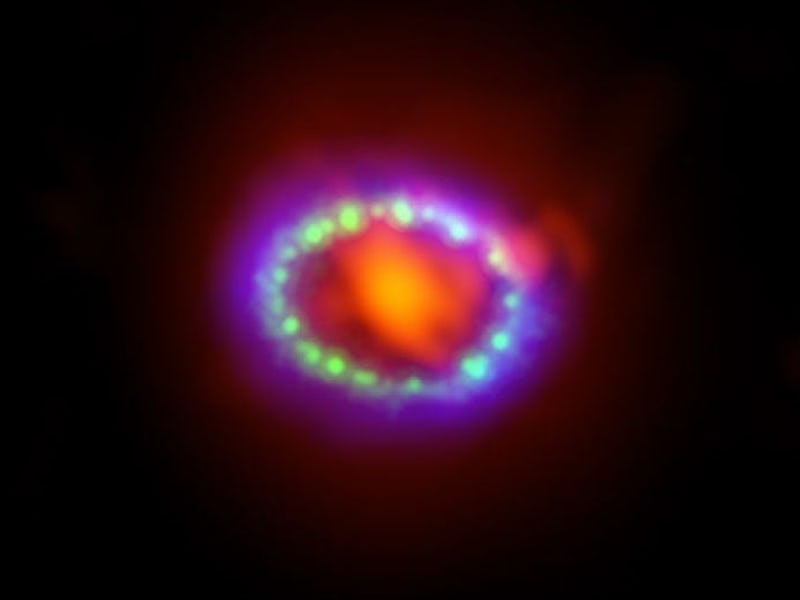Ancient Supernovas Bombarded Life on Earth With Radiation
A few million years ago, cosmic events 300 light-years away could have affected the evolution of life on this planet.

Two ancient supernovas exploding 300 light-years away from Earth most likely bludgeoned early life on Earth with intense amounts of radiation, according to new research published Monday in The Astrophysical Journal Letters.
The authors reported that the two stars that went boom did so around 1.7 to 3.2 million and 6.5 to 8.7 million years ago, respectively. Given the staggering distance they are from our planet, it was a shock to researchers to discover that each explosion could have had a measurable impact on the Earth. “I was expecting there to be very little effect at all,” said University of Kansas physicist and study co-author Adrian Melott in a news release.
Instead, those supernovas seemed to expose Earth to the equivalent of one CT scan per year for every organism that was living on the land or shallow parts of waters. In fact, the blue light caused in the night sky was bright enough to disrupt the sleep patterns in all animals for at least a few years.
“The big thing turns out to be the cosmic rays,” said Melott. “The really high-energy ones are pretty rare. They get increased by quite a lot here — for a few hundred to thousands of years, by a factor of a few hundred. The high-energy cosmic rays are the ones that can penetrate the atmosphere. They tear up molecules, they can rip electrons off atoms, and that goes on right down to the ground level. Normally that happens only at high altitude.”
The big question, of course, is how that radiation and light exposure might have affected the lives — and more importantly, the evolutionary trajectory — of various species. The authors suggest that there could have been “substantial effects on the terrestrial atmosphere and biota,” potentially speeding up the mutation rate and frequency of cancer in animals across the board.
Melott acknowledges the effect wouldn’t be enormous, but could have still been noticeable, perhaps with regards to a minor wave of extinction about 2.59 million years ago. Cosmic rays may have cooled Earth’s climate, increased cloud-to-ground lightning, caused a drying out of Africa which turned lush forests into savannah, and increased glaciations.
“It’s controversial, but maybe cosmic rays had something to do with it,” said Melott.